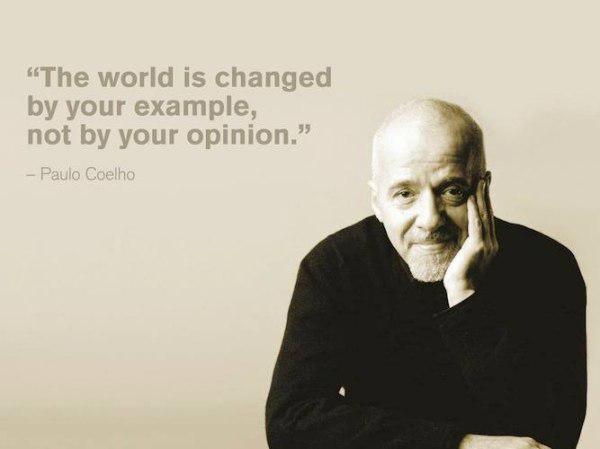If estimating was simply calculating the price of things that work perfectly, we wouldn’t be estimating, we’d be cashiers. Since estimating involves calculating risk, it’s worth some investigation into what is involved. Risk is the uncertainty of a return and/or the potential for a financial loss. The construction estimator must understand that sometimes things go very wrong which can cost substantially more to fix than the job was originally worth. Taken to its fullest extreme, the sky’s the limit for liability.
Like absolutely everything in Estimating, we start by bounding the problem. Companies purchase insurance policies for a reason, there must be a means to backstop the risk of the worst case situation. This allows us to avoid factoring unlikely risks like acts of nature into everything we do. As a rough starting point, we need to consider how the project, or doing what’s necessary to build the project will present risks to people, property, or contractual agreements.
Contractual risks
Most estimators will hone in on contractual penalties like liquidated damages as their main risk. It’s understandable that an easy-to-read penalty would garner attention, but this ignores a very fundamental aspect of risk appraisal. If you can control or manage the contributing aspects of a risk condition, the resulting risk is reduced.
Skeet diversified his portfolio with a “retirement vehicle”.
Taking liquidated damages as an example, the penalty for being late is less of a concern when the contract blocks the client, owners rep, and design team from impacting the production, or schedule. Some contracts require the bidders to submit their own Critical Path Method (CPM) schedule. This allows the General Contractor (GC) to define their duration, milestones, and completion dates. More control means less risk.
Screwing up is always going to hurt you
It’s worth mentioning that there are legal precedents which allow clients to pursue damages against a GC who’s late project delivery led to client losses. Contracts which include the phrase “Time is of the essence”, may not include stipulated liquidated damages however the client can recover damages against the GC for being late. Clients opening retail, resort, gambling, entertainment, retirement, etc, facilities can stand to lose incredible sums in lost revenue for every day they’re prevented from operating. Liquidated damages can actually be the least of your liability problems with high-revenue clients.
Diving deeper into contract law is beyond the scope of this article. I heartily encourage consultation with a contract administrator or attorney as needed. As estimators, we need to understand that penalties for failure aren’t the real drivers of risk. What drives the risk, is what drives the failure.
Flip the problem around. If absolutely everything goes perfectly on a construction project, you have a very simple trade of goods and services for payment. Contracts predominately exist to lay the groundwork for legal action for when things don’t go well.
Production + client delay = your risk
Contracts can, and often do, present conditions that work counter to the project’s success. These are the real drivers of risk. For example, a contract may stipulate the project deadline while also providing clauses whereby the client or their representative can stall production without corresponding schedule extension.
“We spent the last three weeks making changes, now we just don’t have time to give you a two-day extension”
Owners representatives are virtually never contractually at-risk for the outcome of their actions. Everything from submittal review delays to unanswered requests for information (RFI), can prevent the GC from getting their job done as valuable time passes. Contracts are generally written as though the plans and specifications, known as construction documents (CDs) are perfect. While there are certainly provisions for getting questions answered, and submitting change orders, the final arbiter deciding your fate is normally an unaccountable owner, or owners rep.
Good clients are lower risk but they are harder to find.
Project risk is certainly not strictly bound to the contract terms. Just as hiring good employees reduces the chances of problems, so too, does working for good clients with professional design teams. There are good and bad examples at every level of every market. Estimators must learn to size up their clients to get a sense of how things are likely to go. At present, Architects are often the “gatekeepers” of project opportunities for the GC. GCs looking for leads, should be careful to solicit the attention of Architects who attract good clients. The better the clients, the more discrete the opportunities tend to be.
Low barrier to entry work speaks as much of the client as the project. As Edmund Burke so artfully wrote: “Only fools rush in where angels fear to tread.” Better opportunities are out there, but you’ve got to do good work to see them.
Mitigation by bid scoping
GC’s mitigate risk by contracting out portions of the project scope to subcontractors (subs), and vendors. The subcontract provides a layer of risk-management in terms of stipulations, remedial actions, and so forth. By diversifying the risk among many subcontractors, the potential for a catastrophic problem is reduced. GC estimators spend a good amount of their time scoping subcontractor bids. Inclusions, exclusions, clarifications, and allowances frame the essence of what you’re getting for the proposed amount. GC estimators must be very careful when comparing subcontractor proposals because sub proposals are an integral part of how the subcontractor mitigates their risk on the project.
Specialty scope and the risk of the sub-tier sub
From the GC’s perspective, it might seem as though subs “miss” a lot of important scope, or that they’re lazy about including items that seem like they should be part of the deal. In practice, most subs are perfectly aware that the GC would prefer that they take on additional risk for work that’s not really their specialty. Inexplicably, GC’s will tolerate hiring upwards of half a dozen companies for the concrete work, but they have little to no patience for splitting scope in Mechanical, Electrical, or Plumbing (MEP) trades. If it’s pipe, it’s the plumbers job. If it’s wire, it’s the electrician. Perhaps it’s because concrete work is easier for GC’s to understand than the skilled trades.
Specialty vendors like Fire sprinkler, Photovoltaic (solar), Geothermal heating systems, and Fire Alarm are stand-alone companies that switch between subcontracting, and sub-tier subcontracting. Most subcontractors are ill-equipped to manage a sub-tier contract which adds to the subcontractors risk.
Artistic rendering of how the sub-tier-sub contract arrangement breaks down
GC’s pressing for these arrangements like the notion that they have only one contractor for “all the wire”. Lacking the willpower to learn about these “ghost trades” the GC’s are choosing convenience over control. Higher risk means higher prices, GC convenience adds up to squandered opportunities.
Risk in bidder spread
Bid scoping can portray risk in very stark terms. For example an estimator comparing three proposals obviously has a high, middle, and low bidder. It’s incredibly unlikely that the middle number will be perfectly between the high and the low. If the low bid is further away from the median amount, it’s an outlier. “Scary” low bids sometimes happen because people make mistakes.
Cost of replacement
The idea here is to quantify how much it would cost to hire a replacement if the low bidder fails. Be advised that once the project is under-way, the real cost to replace a subcontractor will always be more than the bid-day difference between bidders. Taking over the partially completed work of a competitor is a very different situation than the sub priced on bid-day. I should mention that there are plenty of legal recourse’s for subs who made a mistake on bid day. GC estimators must uphold their duty to investigate and correct bidder mistakes. Scary low bids should signal caution, that’s how a judge will see it in their courtroom. The risk in hiring a low bidder can be considered as the monetary difference between the outlier and the consensus median. I use the term “consensus median” to signify a price that would fall in the middle of the market-value proposals. Estimators should be careful about using the second low bidder as their consensus amount because it’s entirely possible that the low and second-low made the same mistake.
Mark and Jay aren’t picky about what they bid so long as nobody else wants it.
The less the estimator knows about the subcontractors submitting proposals, the less faith they can reasonably have in small data-sets. Estimators who’ve bid highly sought-after projects may find themselves inundated with subcontractor proposals. The proposals will tend to stratify according to contractor ability and interest in the work.
The myth of sub coverage statistics
GCs are always looking for greater “sub coverage” because a bigger data-set implies greater certainty in their calculations. It’s certainly nice if you can get it, but unless you’re a market leading GC with an absolutely irresistible opportunity out to bid, the odds are good that won’t happen. Market leading subs are the only relevant contenders for the project. Without their bids, a GC won’t win the job. So GC’s need to have relationships with those market leaders before the bid. GC’s hounding anyone else for bids “just in case” they come in lower, are wasting the subs time.
It works the same in reverse for subs. The subs can’t reliably win profitable work without a market-leading GC, which makes market leaders lower risk. Lower risk means lower prices, higher hit rates, and better profitability for everyone.
GC’s who stockpile sub bids are wasting most of the subs time. They’re perfectly aware of this which is why these GC’s are among the least likely to provide bid results. Often these are the bid-mill estimators constantly calling an hour from their deadline with jobs that “nobody’s looking at”. This often means one of two things; they’re unacceptably risky for your competitors to work with, or they’re hoping your rushed bid includes a mistake that benefits them. It’s bad business either way.
Ed has a feeling he might have under-bid the job.
Relative risk
We often think of a projects risk in isolation, rather than how the project affects our operation. Losing a critical bid can have dire consequences for a company. Deductive reasoning leads us to add up all the risks and consider the potential reward. Inductive reasoning works in the reverse. Starting with the understanding that we must win profitable work out of the available opportunities, we work within the boundaries of our current market to make the best decisions. It’s very easy to convince yourself that projects are too risky when you look at them in isolation.
Lots of companies become convinced that they’re good at building a specific type of project to the exclusion of everything else. I’ve encountered firms that were utterly convinced that they couldn’t build seemingly identical projects to their regular work, simply because the client was new to them.
As a company, the risk of losing an opportunity to capitalize on your expertise is substantial. Projects that are similar to past successes may indicate that your firms risk-mitigation is particularly effective for that kind of work. Your competitors may not have your expertise, which makes the opportunity less appealing to them. Market leadership is built on the ability to capitalize on opportunities that your competition cannot. You have to see them in order to hit them.
Perspective versus pessimism
Estimating is about controlling risk, not adding money for everything you’re afraid of. The more you know about what’s going on, the less you have to be afraid of. Estimators need to understand that pessimism is a poor proxy for knowledge. There are times you’ll know that a job is a time-bomb of risk. Constant pessimism devalues your council to ownership. There are lots of angry estimators forced into bidding bad work simply because their boss tunes out their complaints. The only thing worse than losing a good job is winning a bad one. In my experience, it takes a considerable effort to lose the truly awful jobs because wise bidders steer clear. Sometimes the only way to lose, is to decline to bid.
“We thank you for the opportunity…but we’re not currently bidding work in the carrion market.”
Timing
Sometimes the most significant risk in a project is how winning it would affect your ability to succeed in everything else you’ve got going on. Tight labor markets can limit growth which in turn limits the amount of work a company can take on before they can’t meet their obligations to perform. Seasonal rushes can quickly overtake the available resources leading to higher prices. Estimators preparing bids for work that will take place during seasonal rushes must consider how this opportunity compares against the most profitable work of the year. Careless estimators can find they’re suddenly on a hot streak winning bids during slow seasons, only to discover their summer is booked solid with low-profit work.
There’s risk in losing opportunities
Estimates are not free, so estimators must consider the risk of investing their time and energy into losing clients. Subcontractor may encounter GC’s with high bid volumes and low hit rates. I refer to these firms as bid mills since they grind out bids as quickly as they can. Sadly, short-changing the estimate leads to lots of mistakes. When they’re lucky, the mistakes lead to a lost bid, when they’re not, they land a profitless job. As a sub, your irresponsible GC’s problem eventually becomes your problem.
Bid mills compete in the warm glow of their accomplishments.
The very best protection against losses is to avoid doing business with irresponsible firms. The time spent on the lost bids could have gone to better opportunities with other clients. The rare and profitless win, consumes company resources to eke out a minimal loss on the project. Those resources were pulled from profitable employment with responsible clients.
The real risk of working with bid-mills is tremendous. Some subs could improve every aspect of their operation by firing bad clients. It’s often difficult for them to see it because they only see themselves occasionally winning bids. Gamblers go broke thinking along the same lines.
Safely getting from existing to proposed
Construction documents generally depict the existing and proposed conditions without going into much detail on how the construction is done. Architects typically rely on the build team to determine the means and methods necessary to realize their design.
On jobs with limited applicable scope, Architects may elect not to hire an expensive engineering consultant. The assumption is that a “little” engineering problem is an acceptable risk for the build team to assume. For example, adding a new piece of roof top HVAC equipment to an existing structure. Without engineering approval beforehand, any resultant failure will be the build-teams responsibility.
Civil projects can present environmental challenges that are safety concerns. Retaining walls are used to hold back soil that would otherwise slump, slide, or erode. Different soil types require “cut-backs” which relate the soils stability to how steeply it can be piled. Sandy soils are prone to cave-in so excavations must have gently sloped edges for worker safety while the walls are constructed. Restricted sites may not allow sufficient room for safe excavations. Ground-water, flash-flooding, and seismic activity can all generate additional safety hazards for workers. These are not simple problems with easy answers.
Projects dealing with compromised or hazardous structures are especially given to unique engineering challenges. These projects demand an engineered plan for every step to completion. Hazardous materials require a site evaluation, testing, and remediation plan built around worker and environmental safety. Estimators are often presented with a false choice; help the client to save money or take chances on safety. There is no choice, build safely or don’t build at all. Playing dumb, or passing the buck on safety issues won’t protect you when bad things happen. Local traditions and “school of hard-knocks” graduates often underestimate the magnitude of what is at stake because they don’t know the margins of error in what they’ve done. A lifetime of narrowly averting disaster does not, an expert make.
Nuclear option
Estimators can contact engineering firms and request a proposal to solve the problem. Often engineers will provide a roughed-out plan of action along with their fees to develop the design, do the calculations, and so forth. Often we get so hung up on the idea that half-baked design is an unavoidable vocational hazard, that we forget that our business is in contracting labor. Estimators work by controlling risk through whatever channels we can. It bears mentioning that estimators should list out the cost of this safety engineering as a breakout cost. Communicating the real cost of safe work may spur an honest client to get their design team on track. Once it’s made so clear, it’s difficult for clients and design teams to pretend they didn’t know it was an issue. Moreover, it gives the client a sense of your commitment to safely delivering their project.
Summing up
Estimating is about controlling risk, rather than simply summing it up. The savvy estimator is looking for ways to mitigate all of the risks mentioned above. Risk is most effectively mitigated by building an operation around successfully controlling problems common to the work you’re pursuing.
Some really excellent clients have horribly one-sided contracts. Until market forces cause them to reconsider their terms, these clients are a bountiful opportunity to the companies who have “seen past the contract” to know what they’re really like. Honest, cooperative, and communicative clients can mitigate the risk of an ugly contract.
Competitive bidding calls for perspective and judgment. Losing a bid isn’t the end of the world, but don’t kid yourself; there are consequences to losing. Time spent on the losing bid wasn’t invested in other pursuits (opportunity cost). Wasting your subs, or vendors time with fruitless bidding costs political capital by lowering your status as a market leader. Failing to justify your place on the client’s select bidders list may get you cut from future invitations.
Taken in whole, the impact of losing a bid carries its own, very substantial risk. “Throwing a number” at work you don’t want is almost always worse than declining to bid. Some GC’s may be concerned about “appearing weak” for backing out of a bid they’ve invited subs to bid on. Estimators understand that there are opportunities that pose much greater risk than they’re worth. Showing good judgment is far superior to a bluff. Showing respect for the sub‘s time is much appreciated. Often it takes a bit of time after the RFP to get a sense of the client and their design team. No amount of perfect bidding will protect against an unethical client. Starving bad clients of bids is one of the best ways to lower the market risk.
For more articles like this click here
© Anton Takken 2015 all rights reserved









January 14th, 2019 at 3:25 am
I’m not sure where you are getting your info, but great topic. I needs to spend some time learning much more or understanding more. Thanks for fantastic information I was looking for this info for my mission.
LikeLike
February 28th, 2019 at 2:56 am
I don’t commonly comment but I gotta state thanks for the post on this one : D.
LikeLike
April 3rd, 2019 at 3:07 pm
Thanks for sharing the information with us.
LikeLike
January 4th, 2021 at 1:19 pm
I too think so , perfectly indited post! .
LikeLike